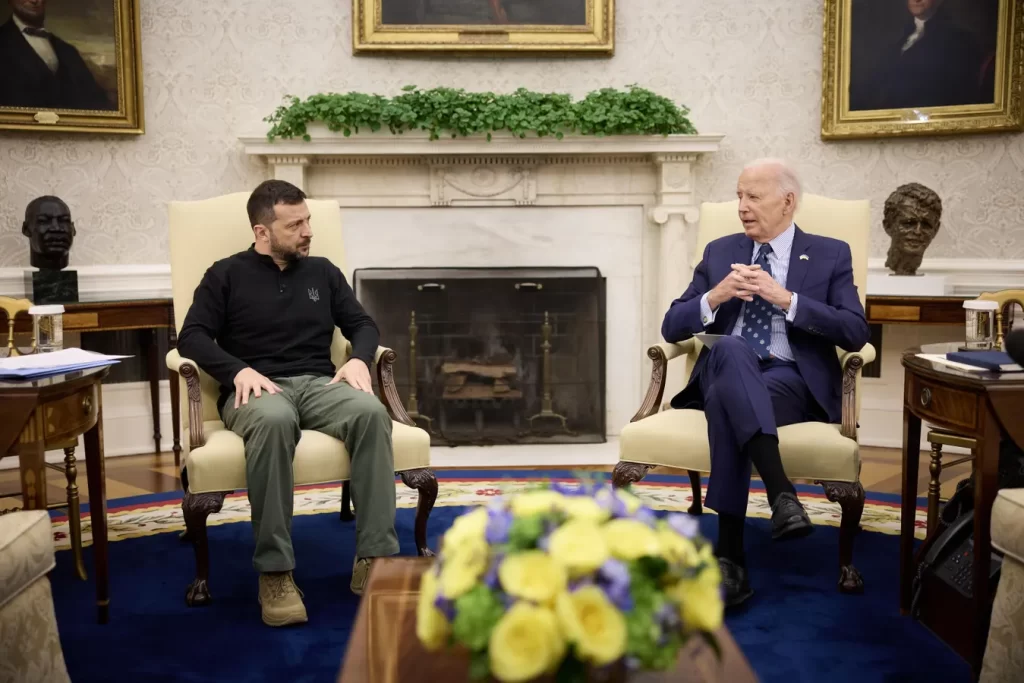President Joe Biden has authorized Ukraine to use powerful U.S. long-range weapons, including Army Tactical Missile Systems (ATACMS), inside Russian territory, according to U.S. officials. This decision comes amid a significant escalation in the war, with Moscow deploying nearly 50,000 troops to the Kursk region in southern Russia, where Ukraine launched a surprise counteroffensive earlier this summer. The region has become a critical flashpoint in the ongoing conflict, and Russia’s military buildup there is aimed at reclaiming territory and preventing Ukraine from using it as leverage in potential peace talks.
The ATACMS, which have a range of approximately 200 miles, will primarily be used to target Russian positions in Kursk. U.S. officials say the goal is to help Ukraine maintain control over the region and thwart Russia’s efforts to make it a bargaining chip in future negotiations. Biden’s decision comes amid growing concerns about the involvement of North Korean troops, who have reportedly been deployed in support of Russia’s offensive in Kursk. This new phase of the war raises the stakes, with Biden and his advisers worried that North Korean participation could lead to even greater escalation.
The use of long-range U.S. missiles inside Russia had been under consideration for several months, and American officials had been divided over the wisdom of allowing this. Some worried that it could further escalate the war, while others were concerned about the limited stockpiles of these powerful weapons. For the first two years of the conflict, the U.S. had refused to provide ATACMS to Ukraine, partly due to concerns about their readiness and the time needed to produce them. However, Biden approved the transfer of the missiles in February, and they were delivered to Ukraine in April for use within Ukrainian territory.
Ukrainian President Volodymyr Zelensky had repeatedly pressed the U.S. for permission to use the weapons to strike deeper into Russian territory, believing this capability was necessary to gain momentum in the war. During a meeting at the White House in September, Zelensky presented a detailed list of targets inside Russia that he wanted to hit with U.S.-supplied long-range missiles. Biden did not reject the request outright but was noncommittal, agreeing to continue discussions. Following the announcement of Biden’s approval, Zelensky took to Telegram, stating, “Missiles will speak for themselves,” signaling that his forces would soon take action in response.
The U.S. decision is seen as a significant shift in policy. While Biden had previously resisted allowing deep strikes into Russia, citing the risk of escalation, the administration ultimately relented. The U.S. also faces the challenge of ensuring that Ukraine has enough advanced weapons to continue its defense, particularly as Russia adapts by moving key targets further away from the front lines.
In the months leading up to Biden’s decision, U.S. officials had argued that ATACMS might not make a substantial difference, given the limited supply of the missiles and the growing capabilities of Ukraine’s own drone industry. Ukrainian drones, which can target longer distances than ATACMS, have become an increasingly important tool in Ukraine’s fight. Additionally, the 200-mile range of the U.S. missiles is not enough to reach some of Russia’s most important targets, such as aircraft used to launch long-range glide bombs against Ukrainian positions.
While the Biden administration has allowed the use of ATACMS in Ukrainian territory, it remains uncertain whether more missiles will be sent to Ukraine in the future. The remaining $7.1 billion in Presidential Drawdown Authority could be used to send additional weapons from U.S. stockpiles, but the missile supply is limited, and replenishment takes time.
This move comes amid mounting concerns about the future of U.S. support for Ukraine. President-elect Donald Trump, who has repeatedly stated that the war would not have happened under his leadership, has promised to negotiate peace and bring an end to the conflict if elected. However, it is unclear how Trump would handle the complex geopolitical situation, particularly regarding military aid to Ukraine. Trump’s team has not commented on Biden’s recent decision to allow the use of U.S. missiles inside Russia, but Trump’s communications director, Steven Cheung, emphasized that the former president is committed to peace negotiations and ending the war quickly.
The conflict in Ukraine has become a focal point of global security, and the deployment of North Korean troops to support Russia’s efforts further complicates the situation. The U.S. State Department recently confirmed that 10,000 North Korean soldiers have been deployed to the Kursk region, where they are engaging in combat operations with Russian forces. These troops are seen as a significant resource for Moscow, both in defense and in freeing up Russian forces for offensive actions elsewhere in the conflict.
As the war continues, the fate of Ukraine, Russia, and global stability hangs in the balance. Biden’s authorization of long-range missiles marks a pivotal moment, but the outcome will depend on the evolving dynamics of the conflict, including the actions of Russia, Ukraine, and international actors like the U.S. and North Korea.









